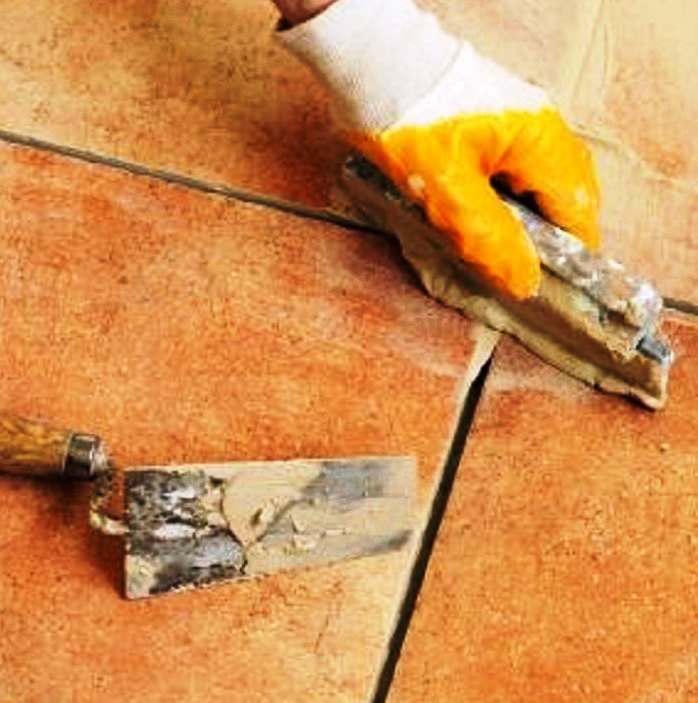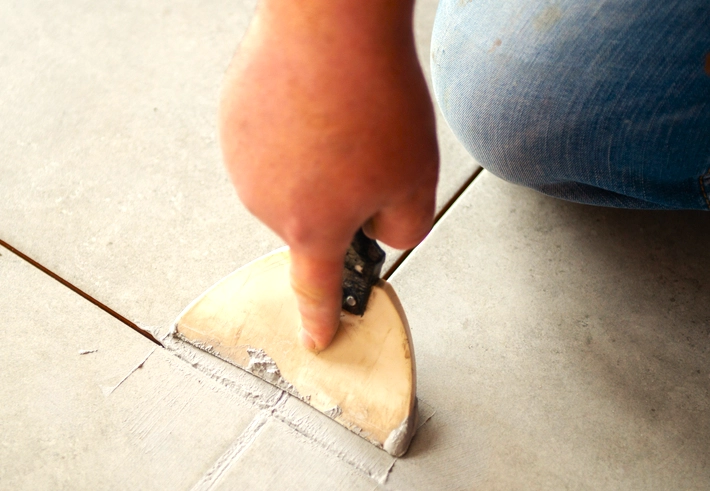Attach Tiles to MDF

When it comes to the materials that they can stick to, tiles are typically very particular. It is important to make sure that the substrate material is structurally stable, even though experts have developed techniques to make tiles stick to practically any surface.
We’re going to concentrate on tiling over MDF today. We will address the question of whether tiles can stick to MDF and, if not, what steps you can take.
MDF: What Is It?
First, let’s define MDF. Known by its complete name, Medium Density Fiberboard, this is plywood’s primary competitor. In order to create well-shaped wood fibers, it is created by breaking down residual hardwood or softwood, which is then placed in a defibrillator. These leftovers are mixed with wax or resin binder.
MDF’s low moisture resistance means that it is primarily used for interior applications. Apart from that, there are a lot of other uses for it. It can be utilized for a variety of projects, including flooring and cabinetry. Its striking finish makes it perfect for projects involving decoration.
We will examine one of the MDF board’s many fantastic qualities that may have an impact on the project you are working on: the board’s low moisture resistance.
You must be aware that MDF is not moisture-resistant if you intend to tile over it. Any contact with moisture will cause swelling.
The tiles and the MDF won’t last very long if you want to tile over MDF in an area that is near the kitchen or bathroom.
Does MDF Make a Perfect Surface for Tiling?
MDF is the worst material to tile over, particularly if it’s situated in a wet area. We suggest using a HarddieBacker or a cement board of your choosing over MDF if you must tile over it.
As an alternative, you can waterproof it to make sure nothing penetrates the MDF through the tiles.
If none of the aforementioned actions are taken, the MDF will begin to swell in a few months. And the tiles would break as a result of that. Your valuable time and resources will have been squandered.
Direct tiling onto MDF has proven to be a terrible experience for many people. You should thus take care not to make the same error twice.
MDF may have a lot of applications and a nice appearance. But MDF’s application as a tiling surface is where it gets complicated.
Don’t worry if you were going to tile over the MDF board; there are a few different approaches you can take.
As an example, we have discussed covering the MDF with a cement board or waterproofing it. The tile installation project’s longevity will be ensured by these two options.
Can I Use Adhesive for Wall Tiles?
from the top. It is not appropriate for you to tile over MDF. Even if you manage to get the tiles to adhere, moisture-induced swelling of the MDF will cause them to peel off.
But as a wise construction enthusiast, you might think about applying wall tile adhesive. These adhesives are strong enough to form a permanent bond with tiles, after all.
One thing will happen if you use wall tile adhesive over MDF. An hour after installation, the tiles will begin to come off.
Why? The MDF will have absorbed the moisture in the adhesives, leaving only the powdery substance. Adhesive for wall tiles might seem like a quick and simple fix, but it’s not the best.
It is inappropriate for you to use adhesive to hold the tiles in place due to the absorbent qualities of MDF. Adhesives that advertise themselves as appropriate for flexible materials should also be avoided. When you lay tiles over the MDF board, these may also let you down.
Should I Use HardieBacker in Place of MDF Board?
Understandably, if you had installed the MDF for aesthetic reasons, you might find it difficult to remove it and replace it with a cement board.
It is imperative that you approach this project with a professional mindset. The latter will no longer be visible or useful when you tile over MDF. Thus, is there a rationale behind its initial presence? Most likely not!
as opposed to a substrate that will cause problems down the road or one that won’t stick to tiles. It is far preferable to use a HardieBacker in place of the MDF board.
This will guarantee a long-lasting and appropriate substrate for the tiles to stick to. The majority of the time and money you spend will be wasted on ineffective shortcuts that your friends suggest.
Could I seal the MDF board?
The main concern when tiling over an MDF board is that it will get wet. It then begins to delaminate and swell, which causes the tiles to move.
You wouldn’t have any issues if MDF didn’t retain any moisture. The issue is that tiles are typically installed in damp areas, which is a problem. The kitchen and bathroom are two examples.
If you plan to tile over MDF in such areas, we recommend sealing the wood first. The market is flooded with sealers.
Make sure to select a high-quality one that will prevent moisture from getting on the MDF board. The longer you can keep the MDF moisture-free, the better for your tile installation project.
Can Ply Be Covered Over MDF?
For tiling over MDF, a thin layer of plywood is an additional appropriate technique. The MDF and the tiles are separated by the plywood.
Ply can be laid on top of MDF and tiled. For the tiles to adhere, you will need a strong adhesive, though. To guarantee the stability of the structure, the ply needs to be primed on the edges and back as well.
It would be fantastic if you could seal the MDF underneath. It will guarantee optimal defense against moisture, which could cause disastrous effects.
Is Aquapanel an Excellent Material to Cover MDF in Tiling Projects?
We would like to introduce you to Aquapanel if you have tried every tile option available and still haven’t found the perfect way to tile over MDF. For individuals among you who have never previously used this product.
This board is designed to be screwed straight into MDF. Aquapanel is composed of cement and fiberglass. It is a great substrate for tiles and keeps the MDF from getting wet. Because it cuts fairly easily, working with it is also a breeze.
Find an Aquapanel board at a nearby retailer. Glue it onto the MDF. It is your responsibility to make sure that there are no gaps that lead straight to the MDF. These may serve as points of entry for moisture.
After covering everything, the Aquapanel can be tiled over. This should be a lengthy project. This is a much better method with guaranteed results, as opposed to tiling directly over MDF.
Can I Tile Over Moisture-Damaged MDF Board?
As a homeowner who undertakes do-it-yourself building projects, you shouldn’t be too harsh on yourself. If you unintentionally let the MDF get wet or damp, and now it’s swollen, this has to be a teaching moment.
To avoid situations like this, you should conduct in-depth research on any subject you are unsure of.
An MDF board cannot be used as a tiling substrate if it has moisture damage. If you lay tiles over the board, it will continue to delaminate and the project will become a complete mess.
When MDF is exposed to moisture, it has been known to swell twice its original size. Consider the effects of placing tiles on top of the expanding MDF.
If that is the case, you will have to replace the MDF board. Since you can use this as an opportunity to swap out the MDF for a cement board or HardieBacker of your choosing, it might be a lose-win scenario.
Tiling would be much simpler and more efficient with such a substrate.
Even in the absence of any moisture exposure, should I tile over MDF?
You might believe it’s okay to cover the MDF board with tiles when tiling a dry environment. There’s no need to take a chance by laying tiles directly on top of the MDF board, even without any moisture.
We recommend that you adhere to the guidelines we have provided above. Plying over the MDF is an option, but using a HardieBacker is preferable. This will ensure that the tiles adhere to the MDF with a firm grip.
Another thing to keep in mind is that there are times when places that don’t get much moisture might get wet.
Unexpected events are those kinds of things. Even though you may not anticipate flooding in your house anytime soon, it is still possible.
Don’t you want your tile projects to withstand these kinds of things? If you do, please install tiles over MDF using the suggested technique.

